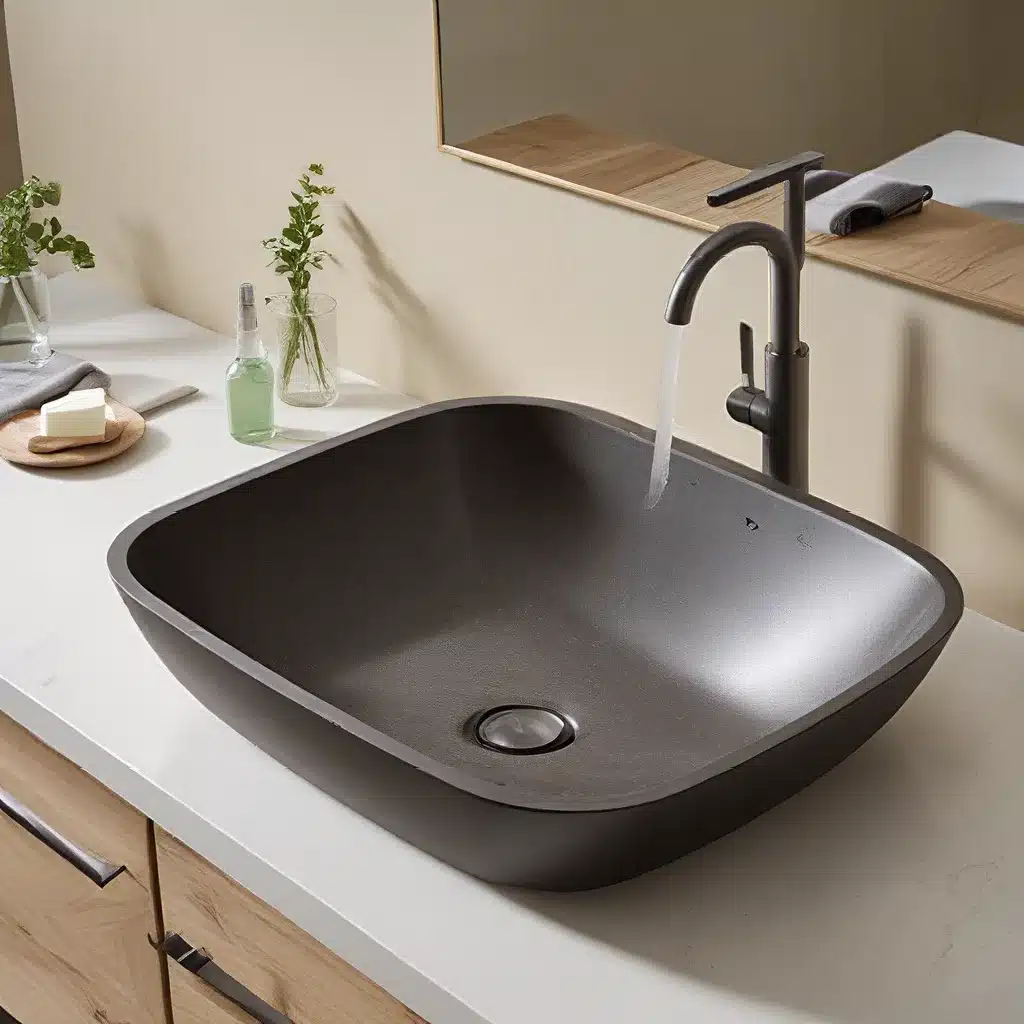
In an era where sustainability and environmental consciousness are at the forefront of home design, the humble washbasin has undergone a remarkable transformation. Once seen as a mere functional necessity, today’s washbasins have emerged as a canvas for eco-friendly innovation, blending style, efficiency, and a commitment to reducing our carbon footprint.
Embracing the Past, Shaping the Future
As trends come and go, one thing remains constant: the timeless appeal of vintage-inspired designs. The Nantucket Sinks collection, for instance, has revived the elegant beauty of Victorian-era bathroom fixtures, reimagining them for the modern era. These stunning wall-mounted sinks, crafted from durable fireclay, seamlessly blend the old with the new, offering a refreshing alternative to the ubiquitous porcelain options.
Nantucket Sinks has embraced the notion that “old is new again”, recognizing that the timeless designs of the past can be reinterpreted to meet the needs of today’s eco-conscious homeowners. By incorporating integrated overflows and accommodating 8-inch spread faucets, these sinks strike a perfect balance between form and function, catering to the evolving preferences of modern bathroom design.
Sustainable Materials Take Center Stage
As the demand for eco-friendly home solutions continues to grow, the selection of sustainable materials for washbasins has become a key consideration. Fireclay, a type of ceramic material known for its exceptional durability and heat resistance, has emerged as a popular choice among discerning homeowners and designers.
| Material | Durability | Sustainability | Maintenance |
|---|---|---|---|
| Fireclay | Highly Durable | Eco-Friendly | Easy to Clean |
| Porcelain | Moderately Durable | Moderately Sustainable | Requires Regular Cleaning |
| Stainless Steel | Highly Durable | Moderately Sustainable | Easy to Clean |
| Natural Stone | Highly Durable | Eco-Friendly | Requires Specialized Cleaning |
In contrast to porcelain, which has long been a staple in bathroom design, fireclay sinks offer a more sustainable and low-maintenance solution. These sinks are not only durable and resistant to chipping or cracking, but they also require minimal upkeep, making them an ideal choice for busy households.
Maximizing Space and Style
As homeowners increasingly embrace the concept of open-concept living, the washbasin has become a crucial element in maximizing space and optimizing functionality. Wall-mounted sinks, such as the Nantucket Sinks collection, are gaining popularity due to their ability to free up floor space and create an airy, uncluttered aesthetic.
However, one must be mindful of the potential challenges that come with this design approach. As the BuzzFeed article notes, “Yes, it’s open and airy, but your 50-year-old knees are gonna HATE that interior designer.” To address this concern, it’s essential to strike a balance between stylish design and functional considerations, ensuring that the washbasin installation meets the needs of all household members, regardless of age or mobility.
Customizing for Individual Needs
In the realm of washbasin design, one size does not fit all. Each household has unique requirements, from aesthetic preferences to practical considerations. Personalization has become a key trend, with homeowners and designers seeking out customizable options that cater to their specific needs.
Washbasin Factory, for instance, offers a wide range of custom-built sinks that can be tailored to individual specifications. Whether it’s a unique shape, a specialized material, or a specific color scheme, these personalized solutions allow homeowners to create a one-of-a-kind washbasin that seamlessly integrates with the overall design of their bathroom.
Maintenance and Longevity
Sustainable design is not only about the initial selection of materials but also the long-term care and maintenance of the washbasin. Proper upkeep is essential to ensuring the longevity and optimal performance of these fixtures, ultimately contributing to their environmental impact.
Fireclay sinks, for example, require minimal maintenance, with a simple cleaning routine using mild soap and water. In contrast, natural stone sinks may necessitate more specialized care, such as the use of dedicated cleaning products and periodic sealing to maintain their luster and resilience.
By educating homeowners on the maintenance requirements of their chosen washbasin, designers and contractors can empower them to make informed decisions and extend the lifespan of these eco-friendly bathroom fixtures.
Embracing the Future of Washbasin Design
As the sustainable home design movement continues to gain momentum, the washbasin has emerged as a centerpiece of this evolution. From vintage-inspired fireclay sinks to customizable solutions that cater to individual needs, the options for eco-friendly and aesthetically pleasing washbasins have never been more diverse.
By incorporating these innovative design trends and material advancements, homeowners can not only reduce their environmental impact but also elevate the overall look and feel of their bathrooms. As we move forward, the future of washbasin design promises to be a harmonious blend of form, function, and environmental consciousness, redefining the way we approach this essential household fixture.

